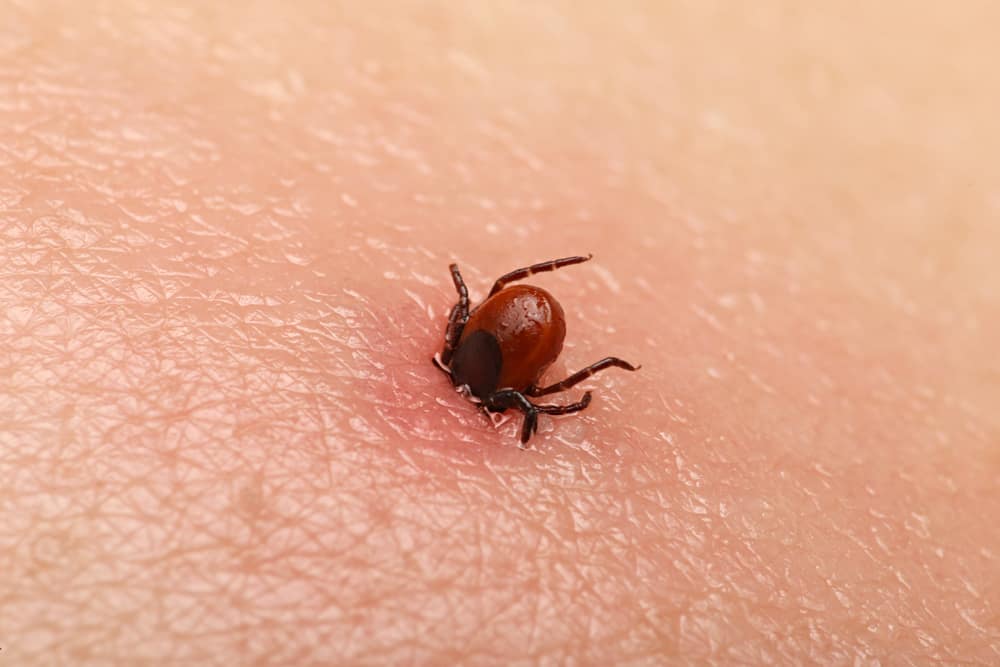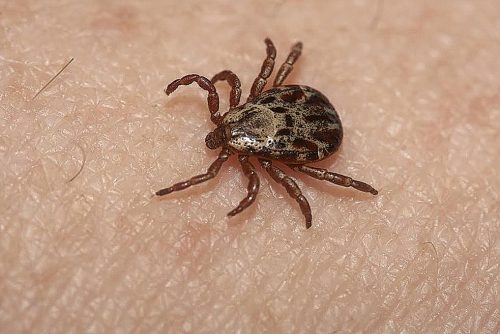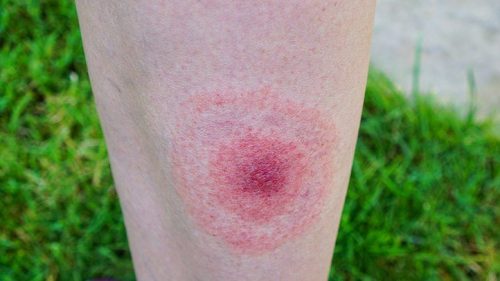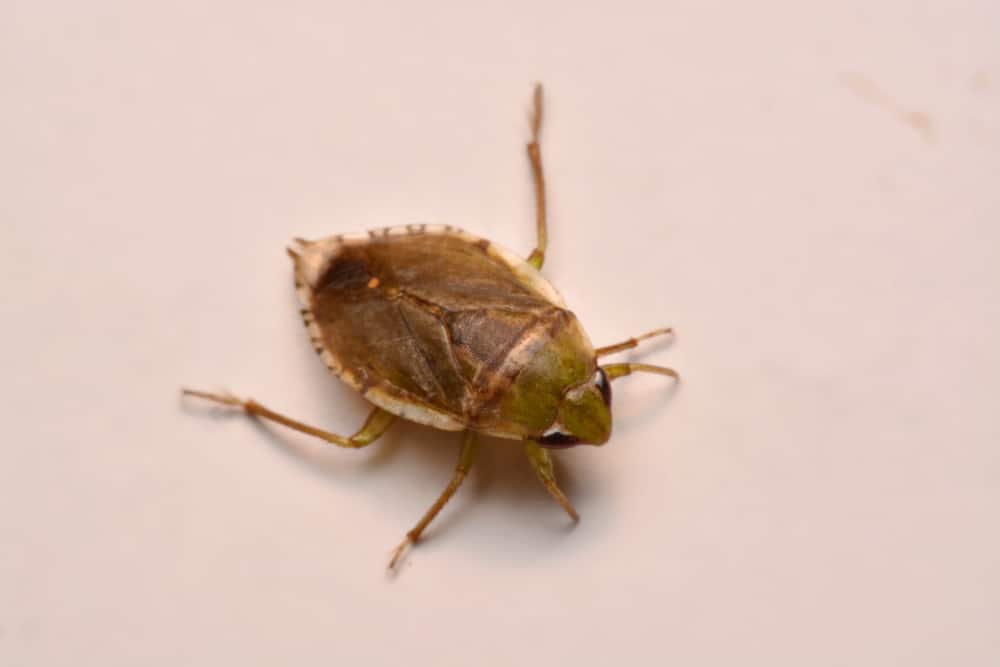If you’ve ever gone hiking through the woods or a grassy field, then you’ve probably been told to watch out for ticks.
And for good reason…
Ticks are notorious for carrying many dangerous diseases, such as Lyme disease or the various strains of tick fever.
They also have a tendency to latch onto a host for prolonged periods of time. Ticks have evolved specifically to burrow their way into the skin, which means they must be removed carefully.
While a tick will eventually fall off on its own, nobody wants to wait around for that to happen.
The longer a tick stays attached, the more likely it is to spread an illness.
So, how do you get rid of ticks?
Page Contents:
What Are Ticks?
Ticks are a type of mite belonging to the scientific order Parasitiformes. They are arachnids, which makes them cousins of spiders and scorpions.
They are common throughout the world, though ticks are more likely to thrive in humid, tropical climates. In temperate regions, some species will go dormant as the temperature gets colder.
(The lack of warmth inhibits their growth cycle and ability to reproduce).
Ticks are considered external parasites. This means that they survive off the blood of other animals, including humans. Ticks require a regular amount of blood in order to develop properly, and they will die if they can’t find a suitable host.
Because ticks can feed off of a variety of living things, they have become vectors for numerous diseases.
What Months Do Ticks Come Out?
Because ticks live all over the United States, they have adapted to a variety of different climates.
Some species are only active during the warmer seasons, while others are active throughout the year.
For example, deer ticks are commonly found in the Northeastern US. They typically come out between October and March, remaining active so long as the temperature stays above freezing.
Various other species have evolved to survive in tropical humid environments.
Gulf Coast ticks, as the name implies, are commonly found in Southeastern states. Because animals in this region don’t have to hibernate in the winter, ticks never have to worry about food becoming scarce.
What Do Tick Bites Look Like?
In many cases, it can be difficult to identify a bug bite at first glance. Spiders, fleas and bed bugs all leave behind bite marks that look like red-colored welts of various sizes.
Tick bites, however, are easy to notice…
A tick bite has a distinct target-shaped appearance. The actual bite mark will be a dark-red welt and look like a bullseye. The mark will be lined with light-red rings.
If properly treated, a tick bite will heal after 2 weeks.
If you’re feeling irritation due to a bite, try not to scratch as you’ll increase the risk of scarring or infection.
Tick-Borne Diseases
Ticks are so dangerous due to their ability to carry disease.
If you’ve been bitten by a tick and develop signs of illness, visit a medical professional immediately.
The following are a few well-known tick-borne diseases:
- Lyme disease: The most commonly known tick-borne illness. Symptoms range from fever and rash around the bite mark to muscle pains and heart inflammation. Lyme disease is rarely fatal and can be treated with antibiotics.
- Typhus: Typhus is a disease caused by many insects, including ticks. The disease is marked by a fever, headache, or rash. In severe cases, typhus can lead to a state of delirium or a coma.
- Tick fevers/Spotted fevers: These are a set of diseases that share symptoms, but vary depending on the species of tick. Infected people exhibit flu-like symptoms, but may also suffer from sensitivity to light or delirium. Antibiotics are used to treat these illnesses.
- Tick paralysis: Unlike other tick-borne diseases, tick paralysis isn’t caused by bacteria. Rather, the illness is caused by toxins present in the tick’s saliva. If left untreated, the paralysis will eventually affect the respiratory system and cause death. Removing the tick from the body is often the only way to stop the toxin from spreading.
Repelling Ticks
If you live in an area where ticks are common, you’ll want to take steps to repel them.
While pesticides will do the trick, there are natural methods one can use to keep the ticks away. Not only are they effective, they’re safe to use around pets and children as well!
Ticks loathe the scent of cedar oil. This oil, extracted from conifer trees, is sometimes used as an ingredient in pest control products. The chemicals inside cedar oil are toxic to household bugs, including ticks.
Simply spray some cedar oil around your house or yard, focusing on areas where ticks may be hiding. The scent of the oil will repel them, if not kill them outright.
Certain fruits and plants also have a strong odor that ticks hate. Citrus fruits, lavender, mint and basil all contain compounds that naturally repel insects and overwhelm their senses. Leave objects with these scents around your yard to ward off ticks.
Apple cider vinegar is another option. Vinegar is an astringent, which means it dries things out. The scent of vinegar is potent enough to dry out a tick’s exoskeleton, slowly killing it in the process.
You can actually spray vinegar on your skin or clothes before hiking. If you live in a wooded or grassy area and go on hikes, this is an effective way of keeping the ticks away.
How to Remove a Tick
Ticks are known to “burrow” into the skin of their hosts. Their mouths have a beak-like structure, which makes it easier for them to latch on for prolonged periods of time.
If left alone, a tick will eventually let go on its own…
But the longer a tick sticks to you, the more vulnerable you are to tick-borne illnesses.
To remove a tick from your body, follow these steps:
- Use a clean pair of tweezers to grab the tick. Try to get as close to the surface of your skin as possible.
- Pull the tick upward. Do NOT attempt to jerk the tick free, as this could cause the mouthparts to stay buried in your skin.
- Once the tick has been removed, clean the area of the bite with rubbing alcohol or soapy water.
- Dispose of the tick by throwing it away, flushing it down the toilet, or dropping it in alcohol.
If a tick’s mouthparts break off during the removal process, don’t panic. You can remove them with tweezers after removing the tick, or you can allow the wound to heal and expel the mouthpieces naturally.















